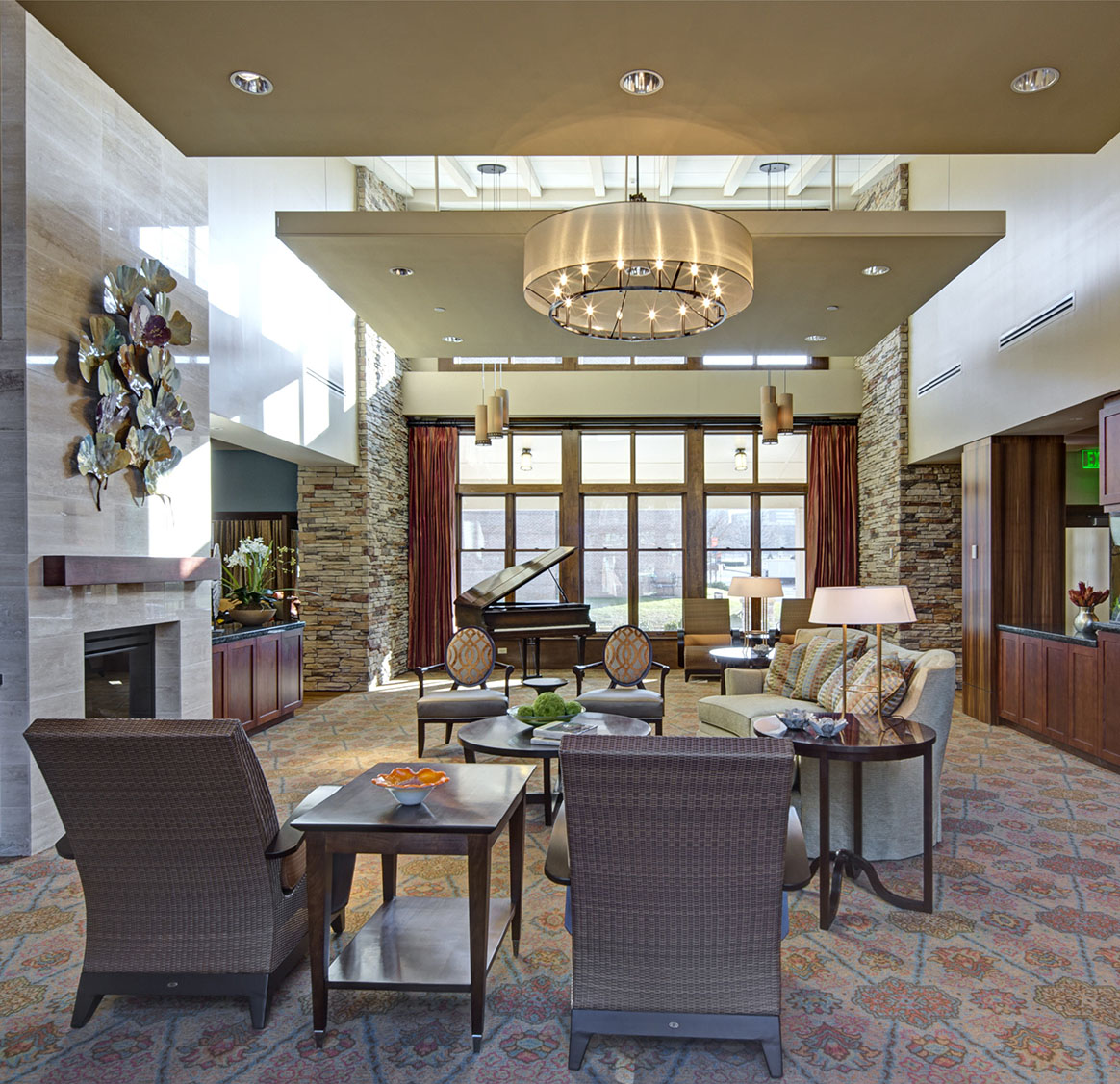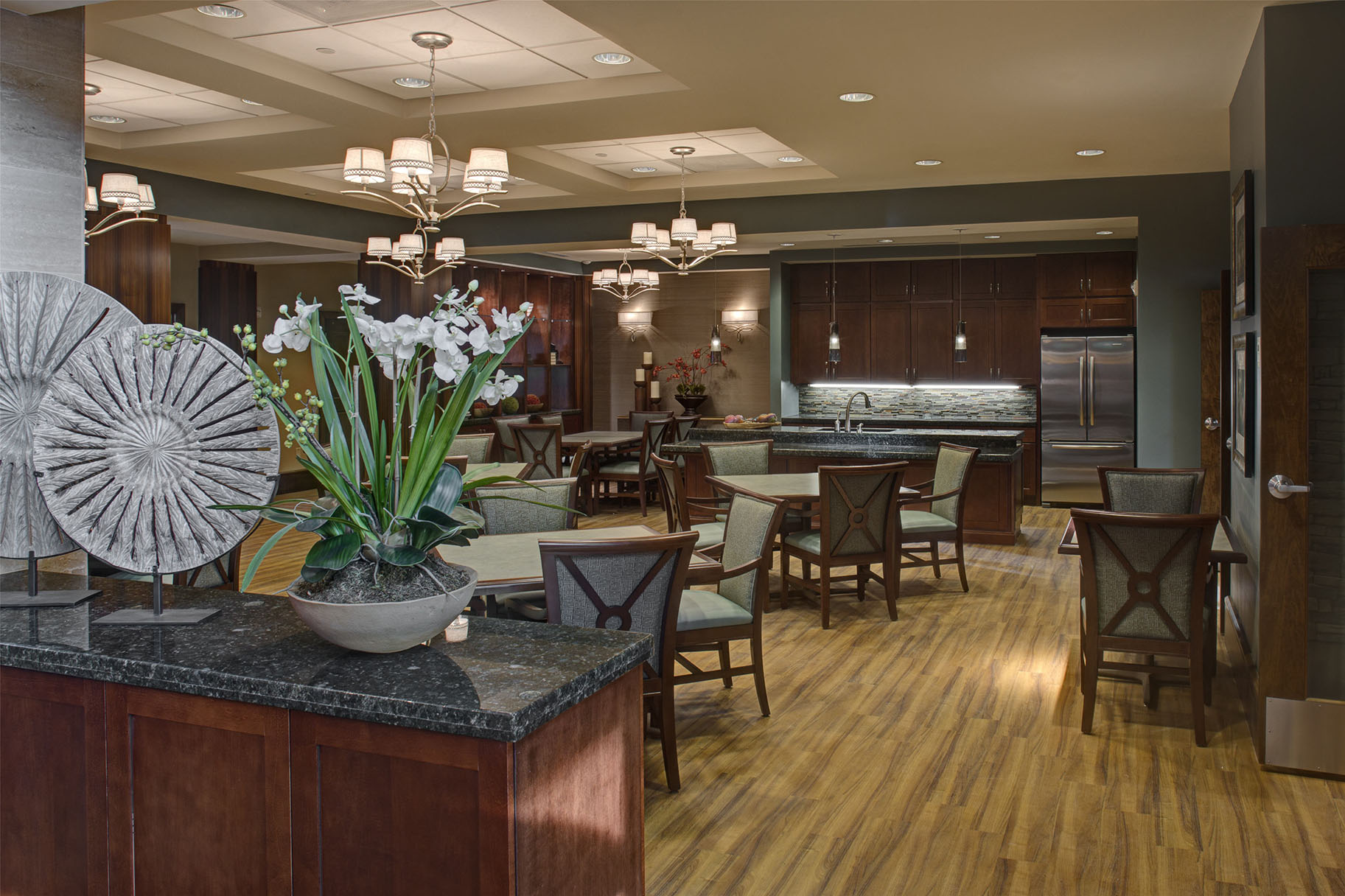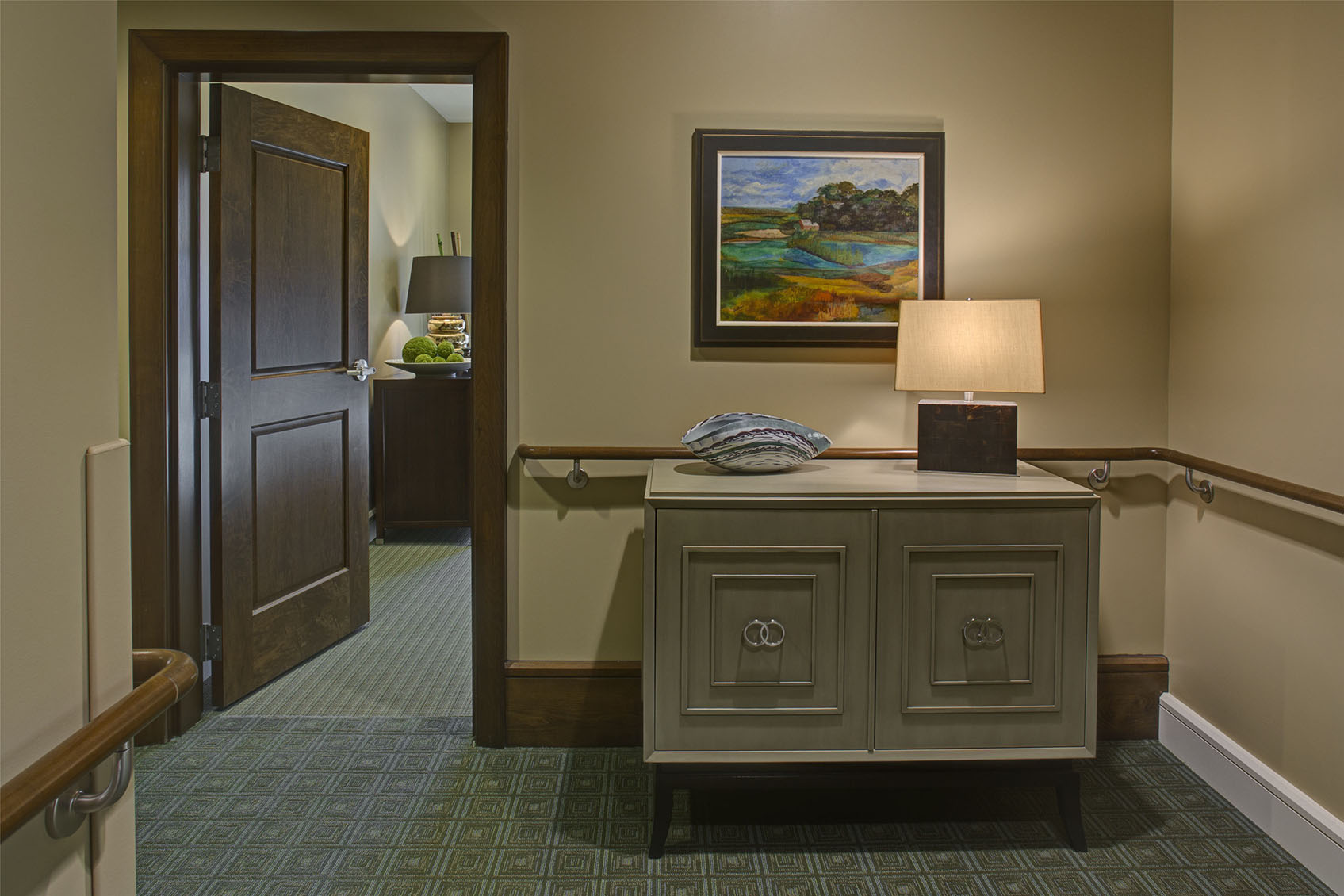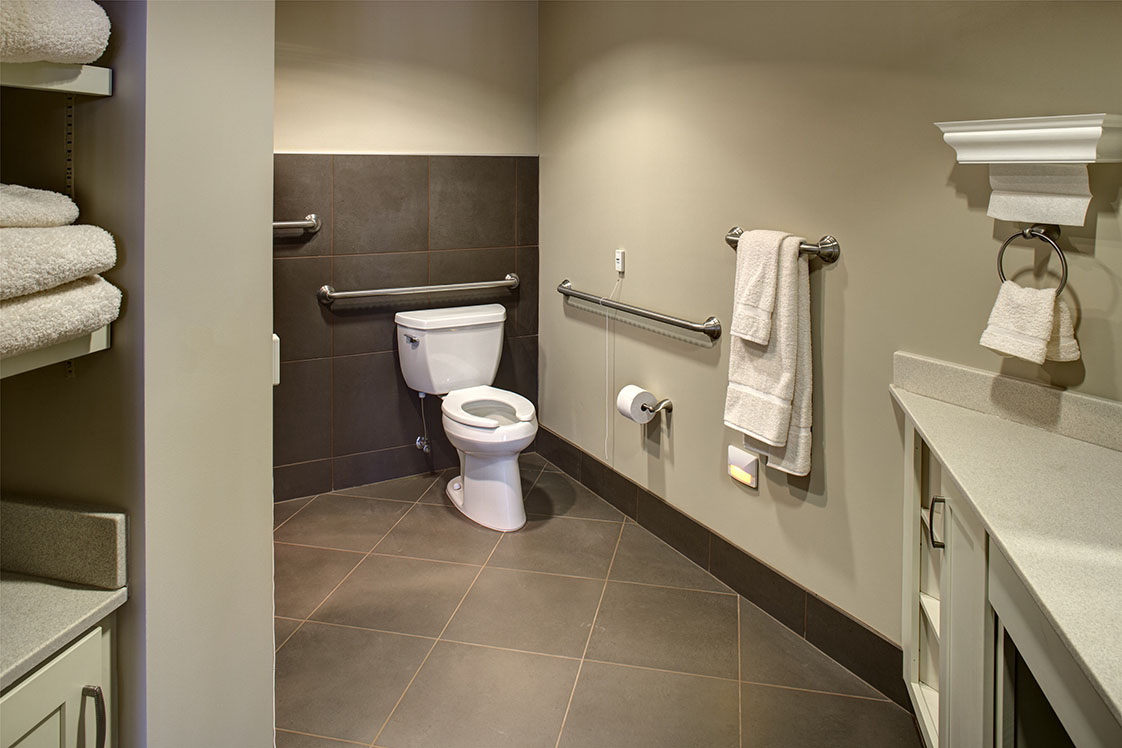The News at THW

The Right Flooring Critical for Memory Care Facilities
Melinda P. Avila-Torio, CHID, RID, CASP, LEED ® AP weighs in on flooring trends in memory care facilities. Her insight is featured in Floor Daily's December 5th Floor Focus online magazine, written by Ruth Simon McRae.
Follow Floor Focus on Twitter @FloorFocus.
Flooring choices for any given area in a senior living environment present a balance of properties and trade offs as illustrated in the project images below from the Cohen Rosen House, a recent THW memory care project. In some situations, there is a clear case for soft or hard floorcovering. In others, it is a question of preference, and of balancing product attributes.
Carpet tile is one example. It offers many key solutions, such as ease of maintenance and replaceability, and a range of wonderful looks, yet has the downside of seam permeability.
Starting from the ground up, the subfloor condition is key. According to Melinda, associate and managing interior designer at THW, “In many cases our clients can’t afford to seal the concrete, which makes carpet tile not the best choice for areas with frequent incontinence episodes. There have been several projects where the owner specifically asked for carpet tile in certain areas. Collectively, we all discuss and review the pros and cons of the carpet tile solution. It is important to clearly understand where this product will perform the best for the operator.”
Memory care dining rooms, in many cases, will have hard surface flooring as opposed to soft. Yet an operator may want carpet for its acoustic properties and home-like feel. In this case, carpet tile presents a good solution. It is important to keep the dining rooms peaceful and quiet, both for ease of conversation during meals and for nutritional reasons—Alzheimer’s Association studies report that noisy dining spaces have been linked to reduced food intake.

Resident rooms may use carpet with a moisture barrier or vinyl flooring. While sheet vinyl is very easy to clean and offers the visual warmth of a plank wood floor, LVT plank flooring in a wood visual is also a popular choice. Yet, in HCAHPS (Hospital Consumer Assessment of Healthcare Providers and Systems) surveys, facilities with carpeted resident rooms often receive higher resident satisfaction ratings.

Owners often prefer porcelain tile for private bathrooms and public bathing or spa-like areas. However, many communities may not have the financial ability to purchase this hard surface flooring. Sheet flooring with slip resistant characteristics is a well accepted alternative for bathroom environments. Typically, this is vinyl sheet flooring with an integrated base. Two colors of vinyl may be welded together so that the integral cove base has the appearance of traditional cove base, while helping the resident distinguish the edge of the walls and floor. Altro’s safety flooring, a patented vinyl flooring formed with slip-resistant grains throughout the wearlayer, is also frequently specified for areas that have potential for standing water.

Underlayment systems, such as QuietWalk from MP Global, can help mitigate moisture. Some also have acoustic properties and provide extra underfoot comfort. To read the full article click here: http://bit.ly/2gIc4Gd
